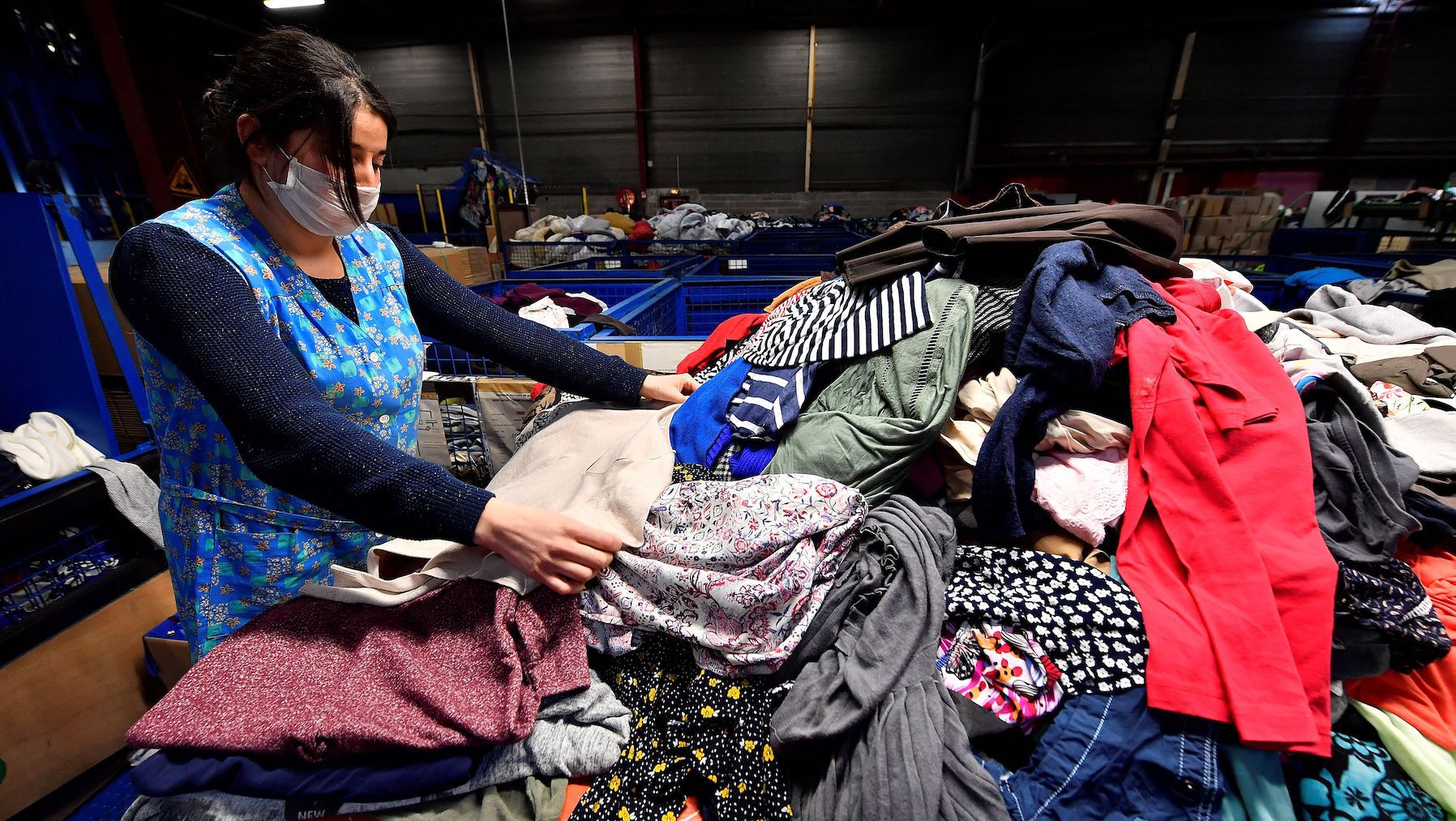
On an overcast day last November, George Harding-Rolls stepped into H&M’s giant Oxford Circus flagship in London with an olive green skirt for the brand’s clothing take-back programme.
The scheme, which H&M claims is the largest of its kind, promises to ensure a responsible end of life for unwanted old clothes. Wearable garments are sent for resale. If they can’t be sold, they’re upcycled or turned into cleaning cloths, while anything that can’t be re-used is shredded for insulation and other uses, according to the company’s website.
But that’s not what happened to the olive green skirt, according to an investigation by the environmental campaign group Changing Markets Foundation, where Harding-Rolls works as a campaign manager.
Instead, it appears to have ended up dumped in a vacant lot on the outskirts of the city of Bamako in Mali, where it was shipped after months of bouncing through warehouses, depots and sorting facilities in the UK and the United Arab Emirates, the investigation found.
Such clothing take-back schemes are increasingly popular among brands looking for ways to address growing concerns about rising volumes of waste. They’re promoted as a way for consumers to responsibly ensure unwanted clothes are re-worn or recycled, but exactly what happens to garments once they are returned is murky.
Over the last year, Changing Markets used Bluetooth trackers to follow the journey of 21 garments returned to take-back schemes run by brands including H&M, Zara, Primark and Belgian-German retailer C&A (Harding-Rolls’ skirt among them). The clothes were bought secondhand, but all were in good condition, and some still had their sales tags, Changing Markets said.
Just five of the garments were resold in Europe. The rest were destroyed, downcycled, stashed in warehouses or shipped to secondhand markets in Africa, already flooded with cast-offs from Europe, the US and Asia that often simply end up in landfill, the report found.
A pair of joggers returned to C&A in Germany showed up in a facility where garments are shredded to produce a material called “fluff,” used as fuel in a nearby cement kiln, according to the organisation’s trackers. The location tag for a grey hoodie given to Primark last pinged from a metal container on a vacant lot in Poland, satellite imagery showed. A set of black polyester pyjamas covered in bold pink flowers returned to a Zara store in Paris was still sitting in a warehouse outside the city when the investigation ended.
“[Brands] are painting these schemes so brazenly as part of the solution,” said Harding-Rolls. “That’s contributing to the illusion that once you’re done with clothes, there is something quite useful to do with them at end-of-life. And that is in most cases just not happening.”
Brands said they had procedures in place to ensure clothes returned through their take-back schemes were managed appropriately, and some contested Changing Markets’ findings. Primark said it believed the hoodie returned by investigators ended up with a clothing reseller in Budapest. C&A did not provide comment.
But H&M acknowledged that ensuring old clothes are disposed of responsibly is a challenge.
“It is a major problem in our industry and in others, that discarded products are not disposed of properly and become waste in different countries,” the brand said in an emailed statement. In response to the Changing Markets investigation, the company said it had failed to meet its own standards, adding that it switched partners for its collection programme in January and is working to build solutions to ensure used textiles are managed responsibly.
One big challenge is that tracking and tracing clothes once they start moving through the complex system of sorting and waste management is tricky. Most fashion companies outsource this process to other businesses, who are responsible for sorting and disposing of products according to brands’ guidelines.
The infrastructure for sorting products is still largely manual and relies on judgement calls about what can be resold and where. Options for textile-to-textile recycling that would turn clothes back into raw materials for the fashion market are still nascent, with a handful of plants just beginning to scale.
It’s an issue moving up the agenda because of mounting regulatory attention. The EU, which estimates its citizens discard about 12 kilograms of textile products each every year, is taking aim at the issue with proposed new rules that would make brands pay to cover the cost of managing textile waste.
But with limited textile-to-textile recycling options available and big gaps in sorting infrastructure, fixing the system so that unwanted clothes really are disposed of in the most responsible way possible will require substantial investment.



